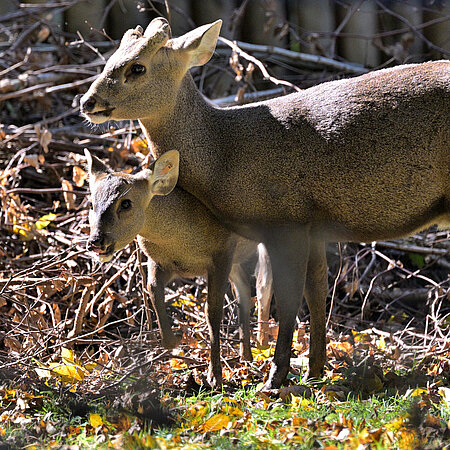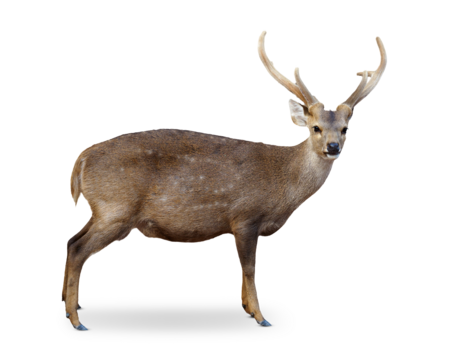Hog Deer
Axis porcinus

- Family
- Deer (Cervidae)
- Weight
- 30–95 kg
- Habitat
- Grasslands and reed beds on floodplains, mangrove forests
Hog-like gait
Hog deer are about the same size as our native roe deer, but have a much stockier build. In summer, the fur of the adults is reddish- or greyish-brown, with pale spots and a dark dorsal stripe; their winter coat is dark brown and unspotted. The name “hog deer” derives from the unusual way they run through the undergrowth. Unlike other deer species that move with their heads held high, hog deer roam the thicket with their heads hung low and their snouts close to the ground.

Mating season all year round
Hog deer do not have a defined breeding season, so mating can occur all year round. This means that their antler cycle is also not fixed, which can lead to shedding outside the usual period of late winter to early spring. Hog deer are typically solitary animals, but may occasionally form small herds. When threatened, they make a loud bark to warn each other of danger
Basis of life
The native vegetation in hog deer‘s geographic range is being displaced by two plants originally from the Americas. However, as hog deer tend to avoid these two invasive plant species, food is becoming scarce
Distribution
